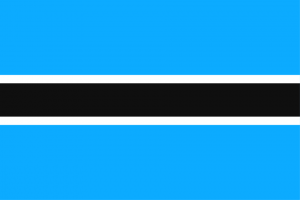Difference between revisions of "Language/Tswana/Vocabulary/Counting-1-10"
m (Quick edit) |
m (Quick edit) |
||
| (2 intermediate revisions by the same user not shown) | |||
| Line 1: | Line 1: | ||
<span pgnav> | |||
{| class="wikitable pg_template_nav" | |||
|[[Language/Tswana/Grammar/Verb-Conjugation|◀️ Verb Conjugation — Previous Lesson]] | |||
|[[Language/Tswana/Vocabulary/Ordinal-Numbers|Next Lesson — Ordinal Numbers ▶️]] | |||
|} | |||
</span> | |||
{{Tswana-Page-Top}} | {{Tswana-Page-Top}} | ||
| Line 93: | Line 100: | ||
===Counting 123 in SETSWANA - Dinomoro ka puo ya Setswana ...=== | ===Counting 123 in SETSWANA - Dinomoro ka puo ya Setswana ...=== | ||
<youtube>https://www.youtube.com/watch?v=9x6JO5-Rsz4</youtube> | <youtube>https://www.youtube.com/watch?v=9x6JO5-Rsz4</youtube> | ||
==Other Lessons== | |||
* [[Language/Tswana/Vocabulary/Family|Family]] | |||
* [[Language/Tswana/Vocabulary/Fruits|Fruits]] | |||
* [[Language/Tswana/Vocabulary/Drinks|Drinks]] | |||
* [[Language/Tswana/Vocabulary/Clothes|Clothes]] | |||
* [[Language/Tswana/Vocabulary/Geography|Geography]] | |||
* [[Language/Tswana/Vocabulary/Places-in-Town|Places in Town]] | |||
* [[Language/Tswana/Vocabulary/Feelings-and-Emotions|Feelings and Emotions]] | |||
* [[Language/Tswana/Vocabulary/Describing-Relationships|Describing Relationships]] | |||
* [[Language/Tswana/Vocabulary/Meals-and-Dining|Meals and Dining]] | |||
<span class='maj'></span> | |||
==Sources== | |||
* [https://files.eric.ed.gov/fulltext/ED283381.pdf An Introduction to Spoken Setswana.] | |||
* [https://files.peacecorps.gov/multimedia/audio/languagelessons/botswana/Bw_Setswana_Language_Lessons.pdf Peace Corps/ Botswana - An Introduction to the Setswana Language] | |||
* [https://www.languagesandnumbers.com/how-to-count-in-tswana/en/tsn/ Tswana numbers — Of Languages and Numbers] | |||
{{Tswana-Page-Bottom}} | {{Tswana-Page-Bottom}} | ||
<span pgnav> | |||
{| class="wikitable pg_template_nav" | |||
|[[Language/Tswana/Grammar/Verb-Conjugation|◀️ Verb Conjugation — Previous Lesson]] | |||
|[[Language/Tswana/Vocabulary/Ordinal-Numbers|Next Lesson — Ordinal Numbers ▶️]] | |||
|} | |||
</span> | |||
Latest revision as of 22:39, 2 April 2023
| ◀️ Verb Conjugation — Previous Lesson | Next Lesson — Ordinal Numbers ▶️ |
In this lesson, you will learn how to count from 1 to 10 in Tswana. Counting in Tswana is an important aspect of the language as it forms the basis of numeracy and fluency in communication. Apart from learning how to count, you will also practice your Tswana pronunciation. Let's get started!
Tswana Numbers 1 - 10[edit | edit source]
The numbers in Tswana have different prefixes depending on the number being referred to.
| Tswana | Pronunciation | English | Comment |
|---|---|---|---|
| Pedi | peh-DEE | one | |
| Robedi | roh-peh-DEE | two | |
| Pedi | peh-DEE | three | |
| Nná | en-en-ah | four | |
| Tlhano | tale-HAH-no | five | |
| Tlhano ya robêdi | tale-HAH-noh yah roh-beh-DEE | six | The prefix "ya" means "of" or "belonging to", so "tlhano ya robêdi" literally means "five 'of' two". |
| Tlhano ya pedi | tale-HAH-noh yah peh-DEE | seven | The prefix "ya" means "of" or "belonging to", so "ntlha ya nná" literally means "four 'of' four". |
| Ntlha ya nná | en-tla yah en-en-ah | eight | |
| Ntlha ya thari | en-tla yah tha-ree | nine | The prefix "ya" means "of" or "belonging to", so "ntlha ya thari" literally means "four 'of' five". |
| Lesome | leh-SOH-meh | ten |
Practice Exercises[edit | edit source]
1. How do you say "two" in Tswana?
2. What is the Tswana word for "five"?
3. How do you say "nine" in Tswana?
4. What is the Tswana word for "three"?
5. What is the Tswana word for "one"?
Answers:
1. "Robedi". 2. "Tlhano". 3. "Ntlha ya thari". 4. "Pedi". 5. "Pedi".
Well done! You've completed the counting lesson. In the next lesson, we will cover ordinal numbers in Tswana, such as "first", "second", and "third". Keep practicing your Tswana pronunciation and stay tuned for more lessons.
Videos[edit | edit source]
Setswana Counting song 10(a) - YouTube[edit | edit source]
Counting 123 in SETSWANA - Dinomoro ka puo ya Setswana ...[edit | edit source]
Other Lessons[edit | edit source]
- Family
- Fruits
- Drinks
- Clothes
- Geography
- Places in Town
- Feelings and Emotions
- Describing Relationships
- Meals and Dining
Sources[edit | edit source]
- An Introduction to Spoken Setswana.
- Peace Corps/ Botswana - An Introduction to the Setswana Language
- Tswana numbers — Of Languages and Numbers
| ◀️ Verb Conjugation — Previous Lesson | Next Lesson — Ordinal Numbers ▶️ |
